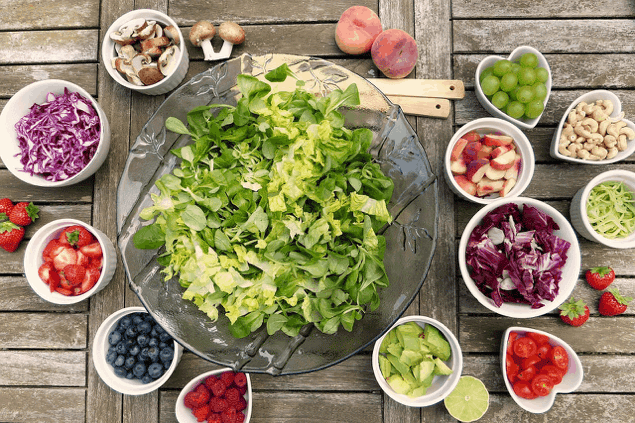
Starting a gluten free diet can often be overwhelming but it doesn’t always have to be. Whatever your reason, with a little work and planning, a gluten-free diet can be easy to follow. This guide will look at some of the basic rules that can help you to be successful in eating gluten-free.
People around the globe, especially in North America, eat an extraordinary amount of grains. However, prior to the agricultural revolution, which began about 10,000 years ago, mankind lived mostly on a Paleolithic diet. The transition from hunting and gathering to agriculture has occurred far too fast for our bodies to adapt to a diet full of grains, such as wheat, barley, and rye.
Because agricultural-type foods are relatively new and foreign to our bodies, based on an evolutionary timeline of hundreds of thousands of years, countless people have yet to develop a tolerance for eating gluten-laden foods such as grains. As a result, the consumption of grains, and especially wheat, can wreak havoc on the body.
Why Go Gluten Free?

Gluten-free diets have become something of a national obsession in the United States and are increasing in popularity worldwide. Recent figures by a Gallup poll show one in five Americans include gluten free food in their diet.(1) The director of a Celiac research center in Massachusetts even describes the gluten-free diet as the most popular diet in Hollywood today.(2)
For many people, a gluten-free diet is not a free choice but a forced medical necessity. For the growing number of people diagnosed with celiac disease, gluten is their worst enemy. A gluten-free diet is as essential to somebody with celiac disease as insulin is to many diabetics. By avoiding all gluten, a celiac sufferer enables their gut to heal and other symptoms to improve.
Other reasons may include gluten sensitivity or another form of gluten intolerance, an allergy to wheat, or just simply you feel better when avoiding gluten. Some people may decide to try a gluten-free diet to help with weight loss or simply in search of a healthier lifestyle. Both Gwyneth Paltrow and Geri Halliwell are firm advocates of the gluten free diet.
Celiac Disease
It’s estimated that about 1% of the population (one in every one hundred people) suffers from celiac disease, an autoimmune condition triggered by gluten. For these people, the mere consumption of the gluten proteins found in wheat, barley, and rye results in damage to the small intestine and interference with the body’s ability to absorb nutrients from food.
Furthermore, the long-term consumption of gluten by people with celiac disease can result in permanent health problems, such as:
- malnutrition
- cancer
- other autoimmune conditions
- reduced bone density
Gluten Intolerance Symptoms
Although celiac disease – the most acute type of gluten intolerance – only plagues 1% of the population, the other 99% of the population is, nevertheless, susceptible to reactions and intolerances to gluten.
It’s estimated that approximately 47.8 million people (15%) in the United States are affected by gluten. Yet, because grains are so abundant in the typical North American diet, countless people endure and suffer from all sorts of reactions, yet have no idea that the culprit of their discomfort and crappy feelings is gluten.
While gluten intolerance often manifests itself through digestive symptoms, there are other symptoms and problems of varying severity. If you’re wondering what some of the specific gluten-intolerance symptoms are, read on.
Immune Response & Inflammation
Gluten intolerance is considered to be one of the most common intestinal food sensitivity diseases. For people who are gluten intolerant, the consumption of gluten sets off an immune response that causes the body to begin to fight it using antibodies and white cells. Once the body’s white cells become exhausted from fighting gluten, inflammation occurs. In fact, gluten is a major contributor to inflammation, which often is the basis of many terrible degenerative health conditions.
It is suspected that a large part of our population:
- experiences some degree of gut inflammation from gluten
- develops antibodies to fight against gluten to stop its proteins from entering the blood stream, thus subsequently triggering an immune reaction
Digestive & Gastrointestinal (GI) Distress
In the beginning, gluten intolerance can result in:
- diarrhea
- bloating
- flatulence (gas)
- recurrent constipation
- foul-smelling stools
- uncomfortable stools
- recurrent constipation
- irritable bowel syndrome
- acid reflux
- occasional vomiting
- malnutrition
However, there are other symptoms too. A gluten intolerant individual who regularly consumes gluten, can experience long-term damage, including:
- intestinal scarring
- nutrient malabsorption
- chronic inflammation
- flattening of the intestinal lining
- impaired digestion
Lastly, an unexplained loss of weight might be a signal that you’re gluten intolerant. This could happen because your body is not absorbing nutrients from food. Furthermore, some people who are gluten intolerant might also be lactose intolerant.
The Brain, Psychology & Mood Swings
Although many of the primary symptoms and signs of gluten intolerance tend to manifest themselves within the body’s digestive tract, it’s believed that the human nervous system can also exhibit symptoms and signs of gluten intolerance.
Studies suggest a possible connection between the functioning of the brain and the following:
- the body’s malabsorption of gluten
- autoimmune reactions triggered by gluten
- gluten’s interference with protein absorption
The body’s nervous system dictates a person’s mood, perception, and quality of life. If gluten causes any deterioration of the nervous system, a person’s quality of life also undergoes deterioration.
Possible indicators include but are not limited to the following:
- depression
- anxiety
- mood disturbances
- irritability
- fatigue
- difficulty concentrating
- migraines and headaches
In addition to the above, research has shown a correlation between gluten sensitivity and the following:
- attention deficit hyperactivity disorder (ADHD)
- attention deficit disorder (ADD)
- multiple sclerosis (MS)
- Alzheimer’s disease (AD)
Skin Conditions
Those with a gluten intolerance or sensitivity can also experience the following skin conditions:
- dermatitis
- skin rashes
- rosacea
- eczema
- canker sores
Bones & Joints
Gluten intolerance can also cause or worsen the following symptoms and conditions:
- joint inflammation
- rheumatoid arthritis
- joint pain
- early onset osteoporosis
- bone loss (due to decreased calcium absorption)
- tooth enamel erosion
Other Possible Symptoms
There’s a growing amount of evidence that suggests that food allergies, food sensitivities, and gluten intolerance might also contribute to a wide range of other undesirable symptoms, as well as complicate certain pre-existing conditions. A gluten-free lifestyle might just be the cure. A gluten-free diet may help to:
- prevent diabetes
- assist in stabilizing blood sugar levels
- stimulate weight loss
- reduce food cravings
- decrease the risk of infertility, stillbirth, and early menopause
- lessen the chances of iron-deficiency anemia
- reduce the chances of atherosclerosis and other cardiovascular diseases
How To Know If You’re Gluten Intolerant
Because gluten intolerance has such a wide range of symptoms, you might be curious to know how to know whether or not you’re gluten intolerant. Well, it can be a bit of challenge to diagnose gluten intolerance. Nevertheless, if you understand that gluten intolerance is essentially a systemic and broad range inflammatory response, you can make better sense out of its wide range of symptoms.
That said, you essentially have a two choices for determining whether or not you’re gluten intolerant:
- testing
- gluten elimination diet
Testing
Your doctor can have tests done to help you determine whether or not you’re gluten intolerant. There’s also a home test available that you can do yourself and then send to a lab. Usually the at home test consists of both a saliva sample and stool sample.
If your physician has you tested, in addition to a stool sample, he or she will likely order a wide range of blood tests to find out about your antibodies.
The tests may or may not include the following:
- anti-gliadin antibodies (AGA) test
- anti-endomysial antibodies (EMA) test
- anti-tissue transglutaminase Antibody (tTG) test
- anti-reticulin antibodies (ARA) test
Testing for the above antibodies is helpful in identifying whether or not you’re gluten intolerant because your body produces antibodies in response to harmful substances and invaders. The above tests vary in terms of reliability and gluten detection sensitivity. Often, in addition to these antibody tests, your physician may also request a full blood count, which is usually for checking out other potential symptoms, such as renal function, liver enzymes, anemia, etc.
Gluten Elimination Diet
A highly recommended and useful tool for determining whether or not you’re gluten intolerant is the gluten elimination diet. This approach targets your unique needs and is thus very beneficial to the people who try it. Also, it’s fun because you get to observe and research yourself. What’s more, this approach doesn’t require any expensive blood testing or stool samples.
For many years, elimination diets have been generally accepted as a standard method for detecting a wide variety of food sensitivities. Of course, if you decide you want complete testing for gluten intolerance, you’ll want to postpone your gluten elimination diet until after you’ve completed any tests.
Foods and Products to Remove
Select a period of time that you’d be comfortable eliminating all gluten products from. For example, you might opt to eliminate all gluten from your diet during a single week. Other people opt to eliminate all gluten-containing food and products for a two- or four-week period. It’s totally up to you.
To stick to the diet, it’s important that you focus on the foods you can enjoy, instead of on those you’re temporarily removing from your diet.
Length of Time
The duration of a gluten elimination diet depends upon two factors: (1) age and (2) symptom severity.
Regarding age, the general duration for the diet is as follows:
- Children – seven to ten days
- Adults – three to four weeks
Regarding severity, most people with more severe symptoms seem to enjoy remaining on the diet. Adults with more severe symptoms might want to remain on the diet for an entire four weeks.
Gradual Or Immediate Elimination of Gluten
The gluten elimination process can occur over a period of anywhere from two to four weeks. During the initial phase, you either gradually or immediately eliminate all gluten from your diet. Once you’ve eliminated all gluten-containing foods and ingredients from your diet, you’ll then remain on the diet for the suggested period of time as mentioned above. So an adult would then remain on the gluten-free diet for a period of three to four weeks.
During this time, you should judge how you feel, and observe whether or not your symptoms have lessened or gone away completely. It’s important to monitor things such as your:
- sleep
- mood
- energy
- digestion
- bowel habits
You might also consider keeping a simple journal after you’ve totally eliminated gluten from your diet. A journal is a great tool to help you track mental, physical, and emotional symptoms and signs.
If you discover that you feel better during this gluten-free period (better mood, energy, digestion, sleep, etc.), that might be a good indication that some, if not all, gluten-containing foods, ingredients, and products were the cause of the problems you were experiencing. If you do feel better with gluten out of your diet and life, you simply proceed to live a gluten-free lifestyle.
Keeping it Simple
Regardless of the duration you choose, avoid making things overly complicated or difficult. It’s best to keep it simple by enjoying the gluten-free foods and items above. Last but not least, be sure that you drink plenty of water – ideally, sixty to 120 ounces per day. That’s about five to ten twelve-ounce glasses of water each day.
Reintroducing Gluten Into Your Diet
Some people choose to re-introduce foods with gluten back into their diets. If you choose to do this, be sure to pay attention to how you feel as you reintroduce these foods back into your diet. Be on the lookout for negative symptoms or reactions, such as:
- fatigue (reduction in energy)
- brain fog
- respiratory or sinus issues
- joint pain or inflammation
- insomnia
- skin rashes or breakouts
- headaches (migraines included)
- gastrointestinal (GI) pain
- bowel changes
- bloating
Also, you might want to consider reintroducing no more than one or two foods back into your diet at a time (one per day) instead doing sort of a free-for-all re-introduction.
The benefit of doing a gradual re-introduction is that you’ll be able to observe and identify which changes are related to which foods. Any unpleasant changes you experience during the reintroduction phase could suggest that you have a gluten intolerance.
Success Tips
For some people, the gluten elimination diet is easy. For others, it can pose a slight challenge. However, it’s not that difficult if you follow these tips:
- Prepare: Devote one week, prior to beginning the gluten elimination process, to finding gluten-free recipes.
- Clear away the gluten: Rid your kitchen and home of gluten-containing foods and items. Don’t try to rely on willpower.
- Stock your home: Purchase the gluten-free foods you’ll need before you begin.
- Cook in advance: Prepare large amounts or multiple servings of gluten-free foods (veggies, protein, etc.) with the necessary seasonings to avoid becoming hungry and to make it more likely that you’ll stick to the gluten elimination diet.
Lastly, remember that this is only temporary, but that the knowledge and understanding about your diet and health that you’ll get from the experience will last you a lifetime.
Gluten Free Foods
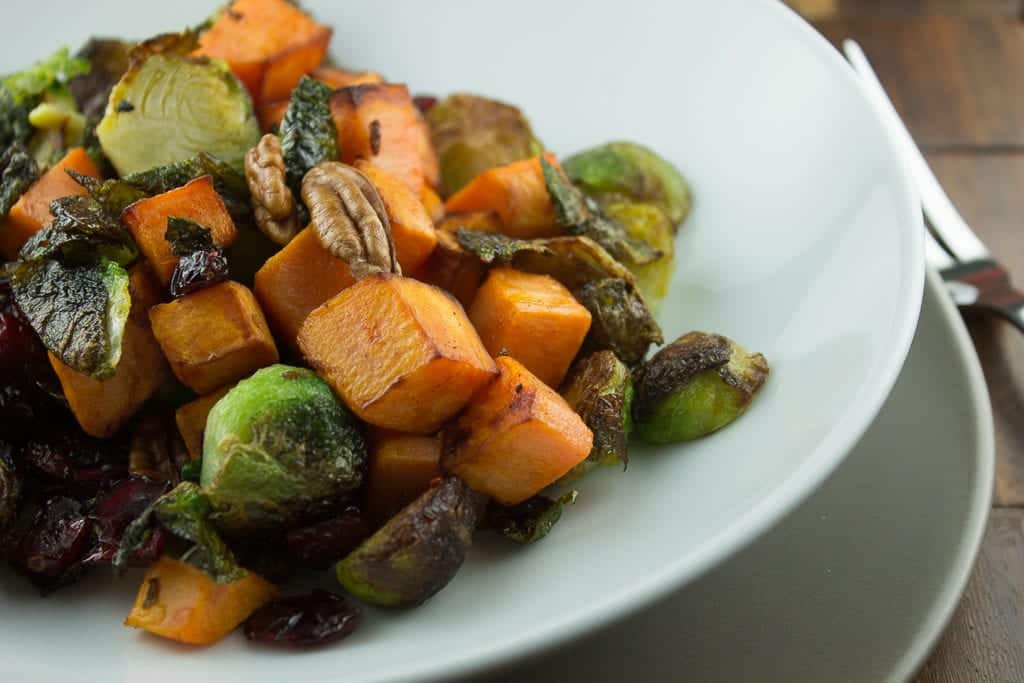
Going gluten-free is surprisingly not too unlike many traditional healthy diets. You can easily fill your plate with many naturally available wholesome gluten-free foods including vegetables, fruit, beans, nuts, seeds, fish and meats.
For those who love their grains, there are still a good deal of gluten-free options available including rice, quinoa, corn, buckwheat and amaranth to name a few. You only have to avoid gluten-containing grains like wheat, barley and rye and oats which may have been stored or processed in a shared facility with gluten-containing grains.
You should always look for a “Certified Gluten Free” label which indicates the oats have been grown on dedicated fields and stored in dedicated gluten free silos.
Pure spices, fresh or dried are gluten free, but sometimes may have gluten-containing fillers, it is always advisable to check the packaging. Most baking ingredients are gluten free including pure maple syrup, honey, molasses, sugars, vegetable oils, olive oils, coconut oil, eggs, and beans.
Even alcohol is allowed on a gluten-free diet with most spirits and wines being gluten-free. Hard liquors made from gluten-containing grains like whiskey or bourbon are put through a distilling process which removes nearly all the gluten, as the gluten proteins are too large to pass through the distillation. Hard ciders are also gluten-free and gluten-free beers are available which are distilled in a special brewing process to remove traces of gluten that would otherwise remain after traditional brewing.
For a definitive list, please check out our gluten free food list.
Avoid These Foods
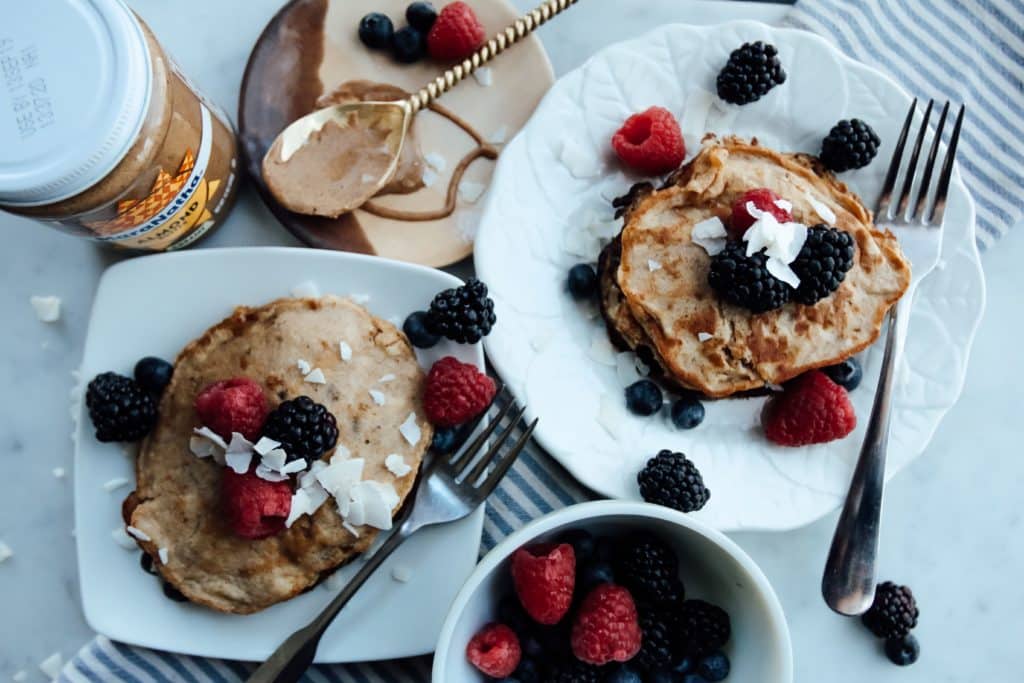
Wheat, barley and rye are the big three that should be avoided at all costs. This includes forms of wheat like spelt, semolina or triticale which is a hybrid of wheat and rye. Any products derived from wheat, barley and rye also include gluten including barley malt in its many forms (malt vinegar, malt syrup, malt flavoring, etc.). Foods that contain wheat can also include traditional soy sauces. Gluten-free tamari (often labeled Japanese soy Sauce) is a good alternative.
All conventional flours including all-purpose flour, cake flour, pastry flour, bread flour, semolina flour and 00 flour contain gluten. Anything made with conventional flour should be avoided including breads (including bread crumbs and breaded products), cakes, pies, cookies, crackers, sauces, gravies and conventional pasta. Even communion wafers have gluten in them.
Breakfast cereals unless specifically labeled certified gluten-free can often contain gluten. Corn Flakes are commonly made with barley malt extract, Rice Krispies use a malt flavoring as do Frosted Flakes. General Mills have made recently made all Chex Cereals, apart from Wheat Chex, to a gluten-free recipe in a dedicated gluten-free facility in the US.
Here’s a list breakdown:
- spelt
- triticale (a wheat/rye mixture)
- durum
- farina
- kamut
- cake flour
- bulgar
- einkorn
- matzo (or matzah)
- farro
- couscous
- semolina
You should also be aware of foods containing ingredients with names that contain “wheat,” including:
- wheat starch
- hydrolyzed wheat protein
- modified wheat starch
- pre-gelatinized wheat protein
As mentioned above, barley also contains gluten. And malt typically contains gluten because it is often made from barley. In fact, malted grain is used to make:
- malt syrup
- malt extract
- malt flavoring
- malt vinegar
- beer
- whisky
- malted shakes
- malt load
- bagels
- Rich Tea biscuits
Rye is a grain that’s very similar to barley and wheat. It’s often found in the following:
- flour
- rye bread
- pumpernickel bread
- crisp bread
- rye beer
- whiskey (some)
- vodka (some)
In addition, many types of grains, such as oats, are frequently processed near gluten-filled grains and are subsequently cross-contaminated with gluten. However, there are many food manufacturers who now produce gluten-free oats, which are specifically labeled “gluten-free.”
In principle, some kind of gluten can likely be found in any type of grain, not just wheat, barely, and rye. However, it’s those three types of grains that are responsible for the majority of gluten-related health issues.
You should realize that if gluten is in wheat, gluten is in flour. As mentioned earlier, its gluten’s elastic properties that make it possible for flour to be transformed into products such as:
- bread
- bagels
- pasta
- pizza dough
- donuts
Therefore, all the above foods or items are highly likely to contain gluten.
Additionally, floured or breaded seafood, poultry, meat, and vegetables will also contain gluten. Furthermore, you should be aware that any poultry, meat, or vegetables with sauces (soy and teriyaki) or marinades are likely to contain gluten.
Most beers, ales, stouts and lagers contain gluten as they are derived from grains like barley, wheat or malt. Gluten-free beers are now available in the United States and even taste rather good!
Gluten can also be found in many unlikely places, such as:
- licorice
- ketchup
- chewing gum
- salad dressing
- MSG
- emulsifiers
- lecithin
- dextrin
- supplements
- imitation crab meat
- many processed foods
Lastly, here’s a list of foods or products that might contain gluten:
- Food flavorings are more often than not gluten-free, however, in very rare instances, some flavorings may contain barley or wheat. Legally, food flavoring containing wheat must be labeled accordingly. Flavoring with barley is typically labeled as “malt flavoring.”
- Modified food starch is usually gluten-free. You can spot the exceptions by looking at the labels. The starch with gluten will usually be labeled as “modified wheat starch.” Also, an obvious indication that it contains wheat is the phrase “includes wheat.”
- Pharmaceuticals and medications might also contain gluten, however, most meds are gluten-free. If you’re gluten sensitive or intolerant, you can simply check whether or not gluten is used in your meds with the company that manufactures them.
- Processed cheese, such as “spray cheese,” may also contain gluten. However, you need not worry about real cheese, as it is free of gluten.
- Seasoning mixes might contain gluten, but it’s required by law that the seasoning mix labels say if the seasoning contains wheat.
Gluten Free Labels
If in doubt whether a product contains gluten, always check the label for the contents. The Food Allergen Labelling and Consumer Protection Act applies to most packaged food sold in the United States. Any food which contains a protein from any of the top eight allergens (milk, eggs, peanuts, tree nuts, fish, soy, wheat and Crustacean shellfish) must be either named in the ingredients or a separate “contains” statement near the ingredients.(3)
The conditions of a product labeled as “gluten-free” have been tightened up by the FDA. After August 5, 2014, any product bearing a “gluten-free” label must be inherently gluten-free or not contain any ingredient derived from a gluten-containing grain which has not been processed to remove the gluten to less than 20 parts per million(ppm). Gluten-free labeling is optionally used by manufacturers with many non-labeled products often being gluten free. (4)
It can also be worth checking on the labeling of many products whether the food was produced in a dedicated gluten-free environment to avoid cross contamination. There is no legal requirement for manufacturers to indicate this on their labels but many companies voluntarily indicate whether a product has been processed on the same equipment as wheat or in a separate facility. Research showed up to 41 percent of grains, seeds and flours tested contained more than the allowed quantification of gluten.(5)
How To Start A Gluten Free Diet?
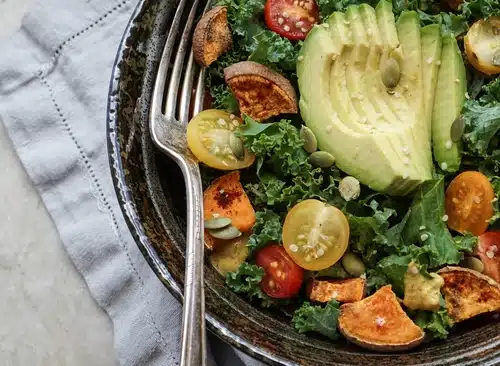
Preparing your kitchen and purchasing a few packaged foods can make sure you are gluten-free from day one. This can be especially important if you are following a gluten-free diet to treat celiac disease.
Cleaning your kitchen thoroughly can help make sure it is gluten-free and avoid cross contamination of previous gluten-containing foods. This may involve disposing of or giving away any gluten-containing packaged foods or any condiments like malt vinegar or soy sauce that contain gluten. Equipment and utensils including a toaster full of bread crumbs or porous cutting or cooking surfaces can often hide gluten. Colanders, muffin tins, sieves and cast iron pans can all harbor residues of sticky gluten.
Purchasing some gluten-free packaged products can stop you feeling deprived of favorite foods in the early days and weeks. Gluten-free breads and pastas can be comforting when first adapting to a gluten free diet. Gluten free baking products can also inspire you to create more gluten-free recipes. You don’t have to be Martha Stewart to make delicious gluten free cakes or cookies.
Don’t Make This Mistake
There are more gluten-free products on the shelves of grocery stores than ever before with major food conglomerates like Kellogg’s, General Mills and Nestle looking to cash in on the gluten-free market. With global sales of $3.5 billion, gluten-free is no longer a niche market.(6)
It can be very tempting when first starting out on a gluten-free diet to go to your local grocery store and stock up on many of the “gluten-free” products now available. Many of your favorites may be there like gluten-free macaroni cheese, Sara Lee gluten-free cakes, gluten-free Corn Flakes and even gluten-free pizzas. Unfortunately studies have shown that most of these gluten-free products are an average of 242 percent more expensive than their traditional non-gluten free products.(7)
As well as the financial cost, you may have to consider the calorific cost. Many of these products are made with refined grains and are heavy in sugar so contain more calories than the traditional gluten-containing version. If you are following a gluten-free diet to lose weight this will have exactly the opposite effect. Gluten-free junk food is still junk food, just minus the gluten!
Eating Out at Restaurants

Just because you are on a gluten-free diet doesn’t mean you have to give up your social life. We have already seen that you can drink alcohol, just not most beers, but there’s no reason you shouldn’t be able to enjoy a meal out with friends. Many of the top restaurant chains now offer gluten-free items although they don’t always guarantee the food to be produced in a gluten-free environment.
Big names including TGI Fridays now offer gluten-free alternatives like a turkey burger which comes on a gluten-free bun. The Cheesecake Factory offers a gluten-free Godiva cheesecake and BJ’s Restaurant and Brewhouse offer a wide variety of gluten-free items. California Pizza Kitchen even makes their gluten-free pizzas in a different area to their “regular” pizzas and use different takeaway boxes too.
Although most chefs are now trained in gluten sensitivity and celiac disease, it’s always worth asking questions. A celiac friend argues gluten-free training is as common as washing your hands in food safety training now. Ask whether the fries are cooked in the same oil as fried chicken coated in flour? Is the gluten-free pasta cooked in the same water as regular pasta?
Gluten Cross-Contamination
People starting on a gluten-free diet, especially with celiac disease, can often be surprised just how little gluten it takes to make you sick. Cross contamination can occur at any stage of food preparation, sometimes in your own home, in a restaurant or even with packaged foods labeled “gluten free”.
Producing whole foods at home in your own kitchen is one of the best ways to avoid gluten cross contamination. You know how clean your kitchen is, what utensils are used and whether any gluten-containing food has been produced in the same area or same oil/water.
A recent study confirmed that avoiding processed foods improved the treatment of celiac disease in people who had previously followed a gluten-free diet to no effect.(8)
Have a Plan
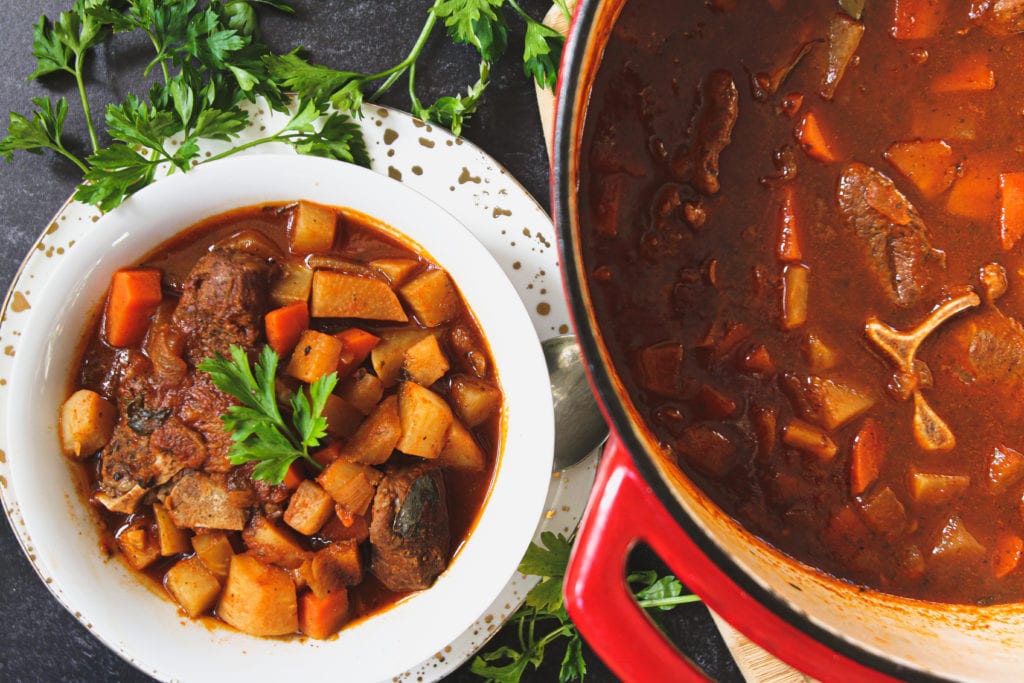
When following a gluten-free diet, shopping is likely to take much longer as you study products more carefully. If you are in a hurry you may sometimes overlook an ingredient that might contain gluten. You may even have to go to different grocery stores or markets to find some your gluten-free products.
Planning meals in advance can also help with a gluten-free diet. There’s nothing worse than arriving home to find an empty kitchen. Just going to the local drive-thru is probably not an option anymore. Keeping gluten-free snacks to hand can stop you making a bad decision which you may regret later.
Getting used to a new way of eating can take work and some extra planning especially when first starting out. Sometimes it can be worth searching out a local gluten-free support group or even looking for online support. Sharing information and experiences can often be helpful. If a gluten-free diet is for medical issues like celiac disease, a registered dietitian can help you draw up a healthy eating plan.
A life without bread, beer, pizza and cakes may not sound too appealing but once you understand the basic rules of avoiding gluten, a gluten-free diet can be quite easy to follow. You don’t necessarily have to miss out on your favorite foods, you just have to learn to say “no” to gluten. You can still enjoy that burrito as it’s made from naturally gluten-free masa harina, just ensure the seasonings are gluten-free too.
No Magic Bullet
A common mistake that some people make with gluten-free living is to assume that it’s some sort of magic bullet. However, good health always requires some work and effort. There are no magic bullets.
For the maximum nutritional and health benefits, be sure to do the following:
- embrace a gluten-free diet that’s packed with a variety of real, whole foods such as veggies, lean proteins, and fruits
- avoid processed foods
- keep your consumption of refined sugar to a minimum
- practice portion control and moderation daily
- exercise daily
- drink plenty of water
Last, but not least, it’s important to understand that a gluten-free lifestyle or diet is no substitute or replacement for a physician’s diagnosis, consultation, or recommendation. It’s always important to seek the advice and approval of your physician or a trained healthcare provider before making changes that may affect your health. Healthcare professionals and dietitians can play a significant role in helping you to reach your goals safely.
Sources:
- http://news.gallup.com/poll/184307/one-five-americans-include-gluten-free-foods-diet.aspx
- http://edition.cnn.com/2017/03/01/health/gluten-free-diet-history-explainer/index.html
- https://www.fda.gov/Food/GuidanceRegulation/GuidanceDocumentsRegulatoryInformation/Allergens/ucm106187.htm
- https://www.fda.gov/Food/GuidanceRegulation/GuidanceDocumentsRegulatoryInformation/Allergens/ucm362880.htm
- https://www.ncbi.nlm.nih.gov/pubmed/20497786
- https://www.ft.com/content/4ec0f2f2-2c0a-11e7-9ec8-168383da43b7
- https://www.ncbi.nlm.nih.gov/pubmed/18783640
- https://bmcgastroenterol.biomedcentral.com/articles/10.1186/1471-230X-13-40